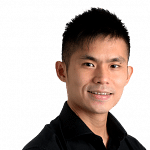When Madam Hiap Cheng Lay moved into a Housing Board rental flat in 1972, she felt a mixture of excitement and fear.
The mother of two young boys was eager to leave the attap house she had been sharing with another family.
However, there was just one problem: Her new home was on the 10th storey.
"I was really scared of entering the lift the first time. Who knew what would happen when the doors closed?" she recalled.
But taking the lift soon became a routine, and she grew to enjoy being 10 floors up.
"It was breezy being that high up. I no longer had to live in a stuffy kampung house."
Madam Hiap, now 71, is among hundreds of thousands of Singapore families who have benefited from the country's public housing programme.
When Mr Lee Kuan Yew became Prime Minister of self-governing Singapore in 1959, his Government embarked on a massive and urgent building programme.
In three years, the newly formed HDB built about 26,000 flats, more than its predecessor, the Singapore Improvement Trust, had built in 32 years.
Mr Lee also pushed for home ownership instead of rental, saying in his memoirs, From Third World To First, that during the riots in the 1950s and early 1960s, people would destroy cars and other property.
But they acted differently during riots in the mid-1960s after they owned homes and property.
Mr Lee saw young men carrying their scooters to safety up the stairs of their HDB blocks.
"I believed that a deep sense of property was instinctive in a person," he wrote.
"I was strengthened in my resolve to give every family solid assets which I was confident they would protect and defend, especially their home."
By the time Mr Lee stepped down as Prime Minister in 1990, eight in 10 Singaporeans were living in HDB flats.
Today, Madam Hiap is among 90 per cent of HDB dwellers who own their homes.
Recalling her kampung days in Bukit Panjang, she said she shared a house with wooden walls and a zinc roof with about 30 people.
There was no electricity or running water.
Candles were used at night.
Water had to be fetched in pails from a well about 250m away from the village.
"The streets were completely dark at night. We had to carry candles shielded by newspapers in case the flame went out," she said.
After she got married, life hardly improved as she shared another attap house with another family.
She still had to get water from a public tap by the roadside.
All that changed in 1972, when she moved into her first HDB flat that was rented for about $70 a month.
"You can't imagine what a difference it makes to have water coming out of a tap in your own home. Before that, even something as simple as brushing your teeth was a chore," she said.
Meanwhile, she made a living selling kueh illegally until 1975, when she rented a drinks stall at a hawker centre.
She worked from 6am to midnight almost daily.
"The other stallholders said, 'There's only 24 hours a day and you're working 18 of them, don't be too hard on yourself,'" she recalled.
But she had two young sons and her businessman husband was a gambler.
Her hard work and thrift enabled her to buy a $60,000 four-room flat in Jurong West in 1982, where she has been living since.
These days, she works only in the morning, leaving a helper to run the stall till 9pm.
Her two sons, now 46 and 47, completed their polytechnic studies and are doing well. They hold stable jobs, have their own families and live in their own HDB flats.
Madam Hiap, whose husband died about four years ago, said she had a tough life, but she is convinced she would have been worse off in another country.
"I don't have any education and can't even write my own name," she said.
"But I have a home that belongs to me. The Government has been fair to people like me and I will always be grateful."


